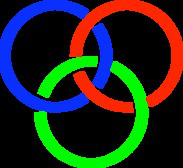Orateur
Prof.
Emiko Hiyama
(RIKEN? Japan)
Description
One of the primary goals in hypernuclear physics is to extract information about baryon-baryon interactions in a unified way. By making use of the hyperon(Y)-nucleon(N) scattering data and the rich NN data complementarity, several types of the YN/YY interaction models have been proposed on the basis of the SU(3) and SU(6) symmetries. However, these YN/YY interaction models have a great deal of ambiguity at present, since the YN scattering experiments are extremely limited and there is no YY scattering data. Therefore, it is important to extract useful information on Y N/Y Y interactions from studies of hypernuclear structures. In the case of ΛN sectors, the results of the high-resolution γ-ray experiments have been quite important for such a purpose, where level structures of Λ-hypernuclei can be determined within order of keV.
In this work, on the basis of our previous studies, we investigate structures of 10-Be-Λ (ααnΛ) and 10-B-Λ (ααpΛ) and properties of underlying ΛN interactions therein. These Λ hypernuclei
provided us many interesting subjects so far. For example, aiming to study ΛN spin-dependent interactions, the high-resolution γ-ray experiment has been performed to measure the splitting energy of 1− -2− of 10-B-Λ at BNL-E930. However, they could observe no energy splitting: this means that the excited 2− state lies by less than 100 keV above the ground 1− state, or the ground state in this hypernucleus is of a 2− state. It should be noted here that the 10-B(K− , π − ) reaction produce the 2− state far more strongly than the 1− state, and then the ordering of 1− - 2− states cannot be obtained from the data of the peak structure in this reaction. For instance, it has to be determined by observing the pionic decay whether the ground state is of a 1− or 2− state.
Another interesting subject is the charge symmetry breaking (CSB) components in ΛN interactions. It is considered that the most reliable evidence for the CSB interaction appears in the Λ binding energies BΛ of the A = 4 members with T = 1/2 (4-He-Λ and 4-H-Λ). Then, the CSB effects are attributed to the differences ∆CSB = BΛ (4-He-Λ) − BΛ (4-H-Λ), the experimental values of which are 0.35 ± 0.06 MeV and 0.24 ± 0.06 MeV for the ground (0+) and excited (1+) states,
respectively. There exist mirror hypernuclei in the p-shell region such as the T = 1 multiplet with A = 7 (7-He-Λ, 7-Li∗-Λ , 7-Be-Λ), T = 1/2 multiplet with A = 8 (8-Li-Λ, 8-Be-Λ), T = 1/2 multiplet with A = 10 (10-Be-Λ, 10-B-Λ), and so on.
For 10-Be-Λ, hypernuclear experiment of 10-B-Λ (e, e K+)10-Be-Λ was performed at Thomas Jefferson National Laboratory and the analysis is in progress. In this experiment, it is possible to measure
resonant states as well as bound states. Then, it is required to predict theoretically.
For this purpose, the theoretical results of 10-Be-Λ will be reported within the framework of α + α + Λ + N four-body model in the workshop.
Auteur
Prof.
Emiko Hiyama
(RIKEN? Japan)

